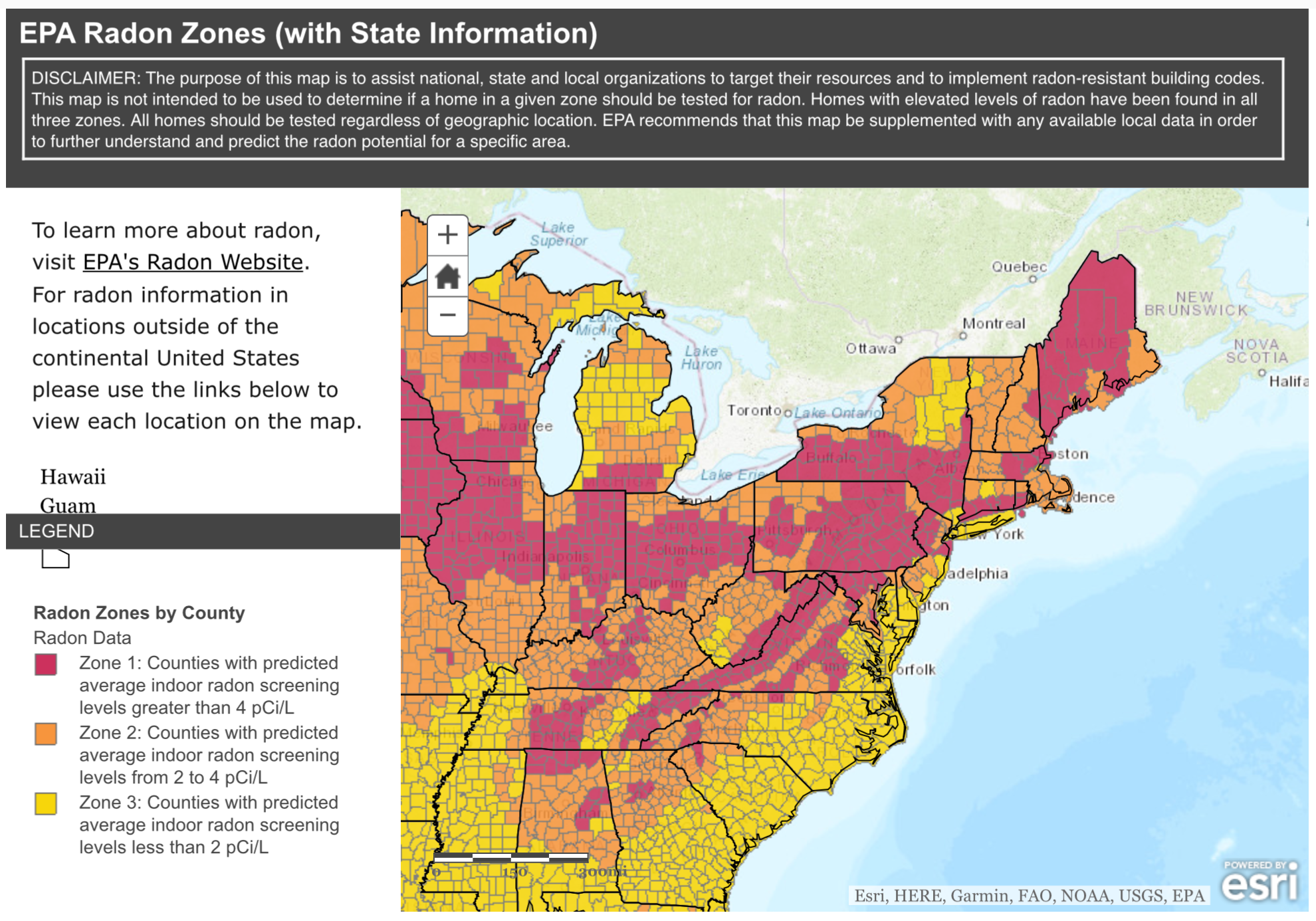Radon Testing

At GPA we use a Continuous Radon Monitor (CRM) to test the Radon level in the home. This form of Radon testing delivers the quick results needed in real estate. The advantage of a CRM is that it can be more accurate than passive test kits such as charcoal detectors or E-Perms. A CRM offers the advantage of measuring the Radon levels every hour, which can indicate unusual Radon patterns. Our CRM also has tamper resistant features which are not available in other forms of Radon testing. Fast, accurate, reliable results you can trust to keep your family safe! Call us today to get your home, or future home, tested for Radon!
According to the Environmental Protection Agency, The Surgeon General, the Center for Disease Control, and many other agencies, Radon is the second leading cause of lung cancer in the United States, second only to smoking. The EPA and the Pennsylvania Department of Health strongly recommend that all home buyers and owners have their home tested for indoor Radon. According to studies, "when compared to cancer mortality from all causes, radon-related lung cancer, if it were treated as a distinct disease category, would rank among the top 10 causes of cancer mortality and is considered a leading environmental cause of cancer mortality in the United States." (see Reference 1 below) In the United States, Radon is the number one cause of lung cancer in non-smokers and significantly raises the risk of developing lung cancer in smokers.
The amount of Radon concentration indoors depends primarily on the amount of Radon produced in the underlying soil and bedrock (see the map on this page), the soil permeability, and the home's construction. Normal pressure differences between the house and the soil under and around the house often create a slight vacuum that can draw Radon gas into the home.
Since Radon is a gas, it can easily enter homes through hollow block walls, cracks in concrete floors and walls, openings such as sump pits, floor drains, construction joints and pipe penetrations. Once indoors, Radon can accumulate to high concentrations. If Radon is found to be elevated in the basement or ground level rooms, then the Radon levels are often high in main and upper floor levels as well because it can easily pass through the floor construction. Because Radon is tasteless, odorless, and colorless, the only way to know if it's in your home is to have it tested. In fact, even health care providers are being encouraged to educate their patients about Radon and encourage Radon testing in their homes. (see Reference 2 below) Keep your family safe - your health is worth it! Test for Radon! Check it out!
REFERENCES:
- Field, R. W., and B. L. Withers. 2012. "Occupational and Environmental Causes of Lung Cancer." Clinics in Chest Medicine 33 (4): 681-703
- The CRCPD's (Conference of Radiation Control Program Directors, Inc.) guide entitled, Reducing the Risk from Radon: Information and Interventions, A Guide for Health Care Providers, sections entitled, Sample Guidance for Use in Health Care Settings, page 8, The Role of Health Care Providers in Reducing the Burden of Radon-Induced Lung Cancer, page 9, and sample of Medical Records Questionnaire page 10.
- EPA (U.S. Environmental Protection Agency). 1993. (partial) EPA's Map do Radon Zones, National Summary. EPA 402-R-93-071. Washington, D.C.:EPA.
- CDC (Center for Disease Control and Prevention). 2017. "What Are the Risk Factors for Lung Cancer." Last modified May 31,2017
- EPA's Consumer's Guide to Radon Reduction
- EPA's Home Buyer's and Seller's Guide to Radon
- National Research Council. 1999. Health Effects of Exposure to Radon: BEIR VI. Washington, D.C.: The National Academies Press.
Notice To Clients
The Sun Nuclear Model 1028-XP Continuous Radon Monitor that we use
Certified by PA DEP. ID#3358
Pennsylvania law requires that anyone who performs radon testing, mitigation or laboratory analysis activities must be currently certified by the Pennsylvania Department of Environmental Protection (DEP). Any persons providing these radon services shall present to the client a current Department-issued photo identification card upon request. If you have any questions, you may contact DEP at the Bureau of Radiation Protection, Department of Environmental Protection, PO Box 8469, Harrisburg, PA 17105-8469, (717)783-3594.
- read moreRadon in Pennsylvania
Radon is a naturally occurring gas formed by the breakdown of uranium in the soil, water and rocks. If one were to reason: 'Radon couldn't be a problem in my area' they would be sadly mistaken. According to the EPA's Radon Zones map, (see map above) our county and all surrounding counties in our area are in Zone 1, noted in red. These are counties with predicted average indoor Radon screening levels greater than 4pCi/L, the EPA's action level at which remediation should be done.






